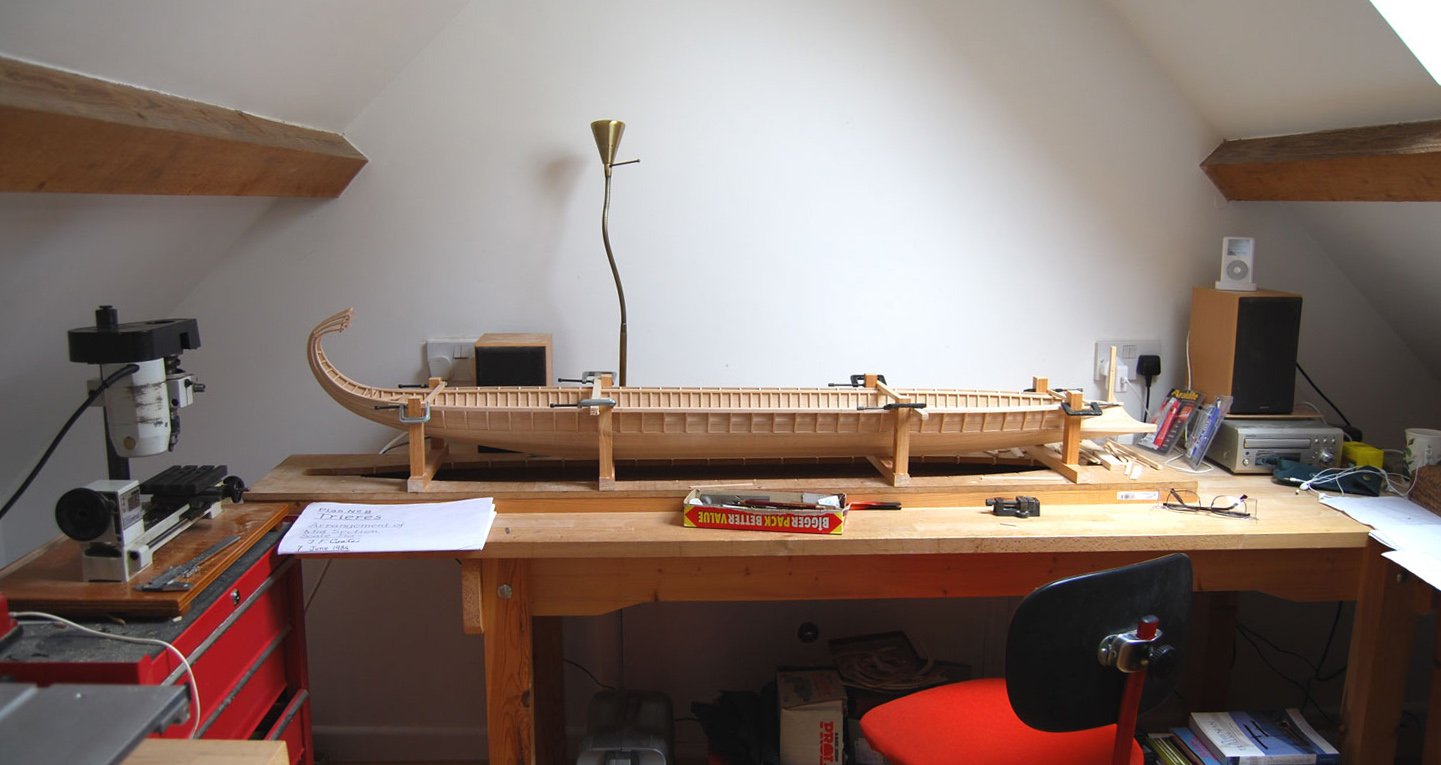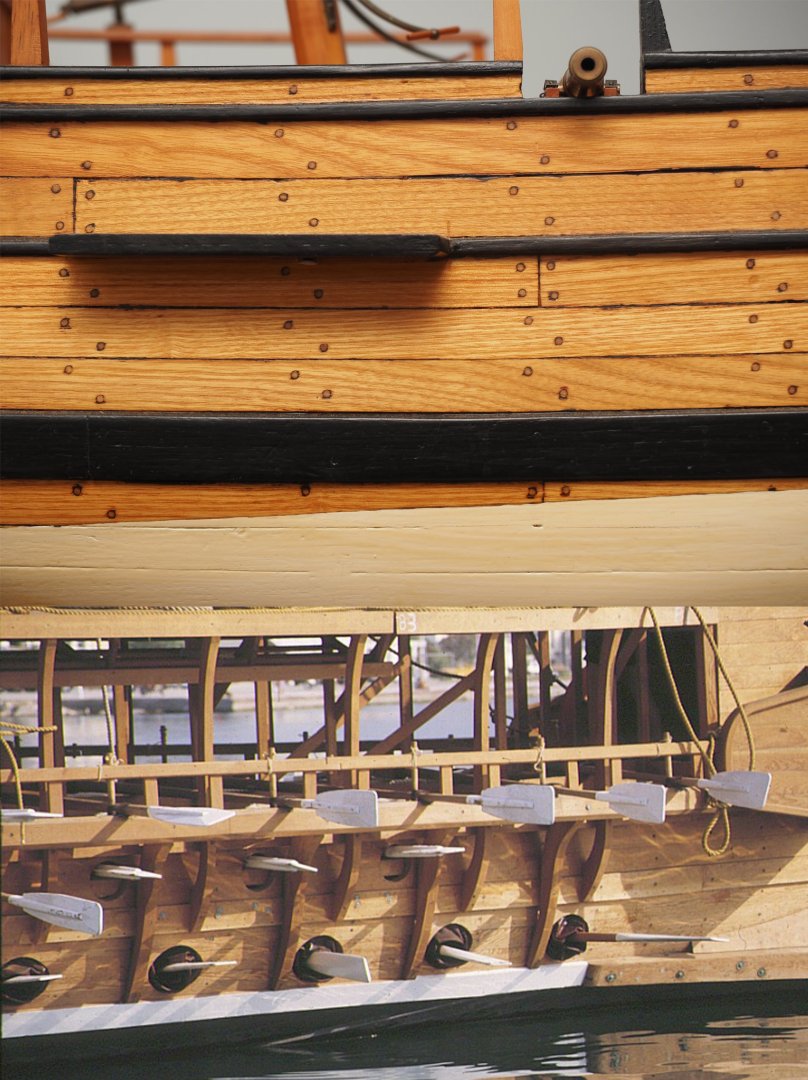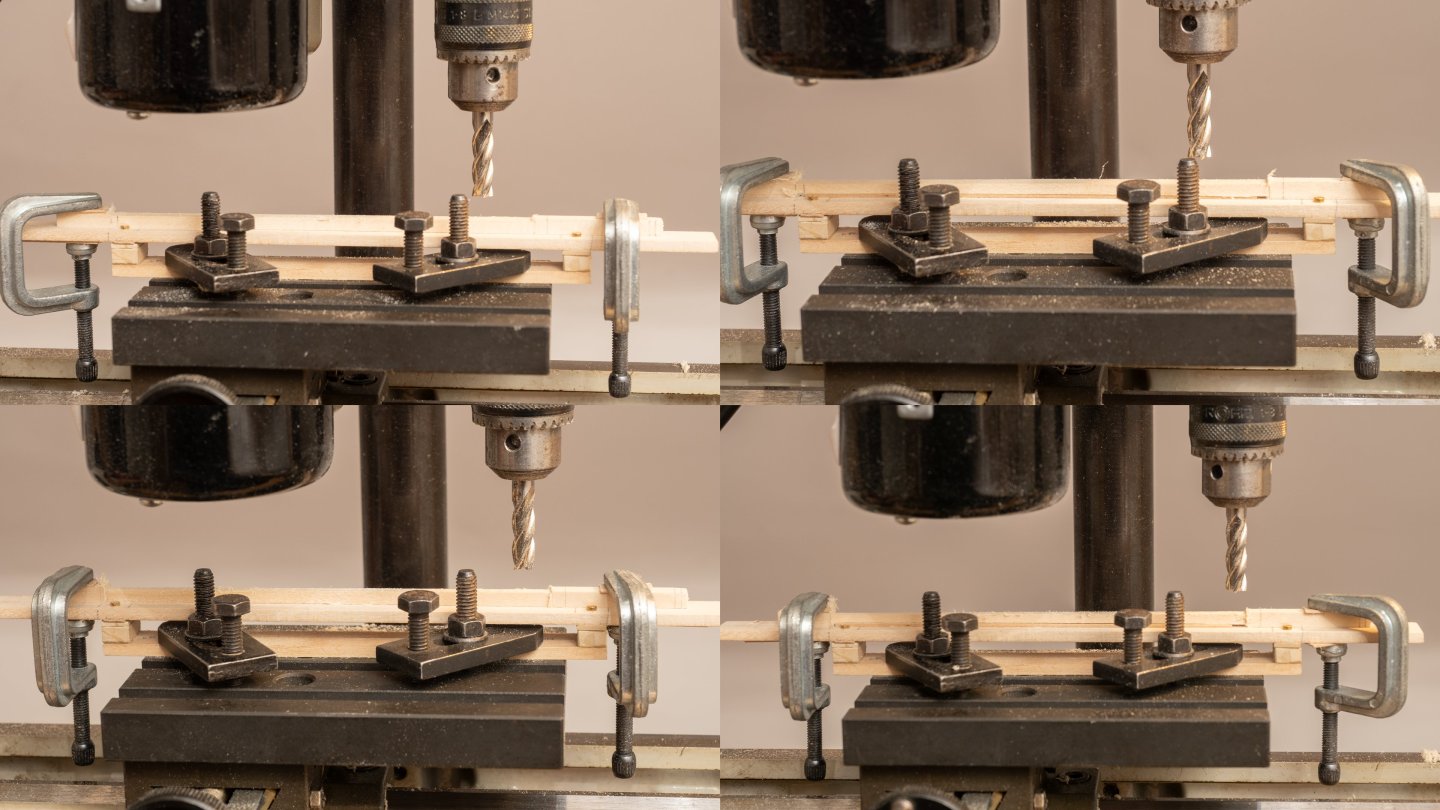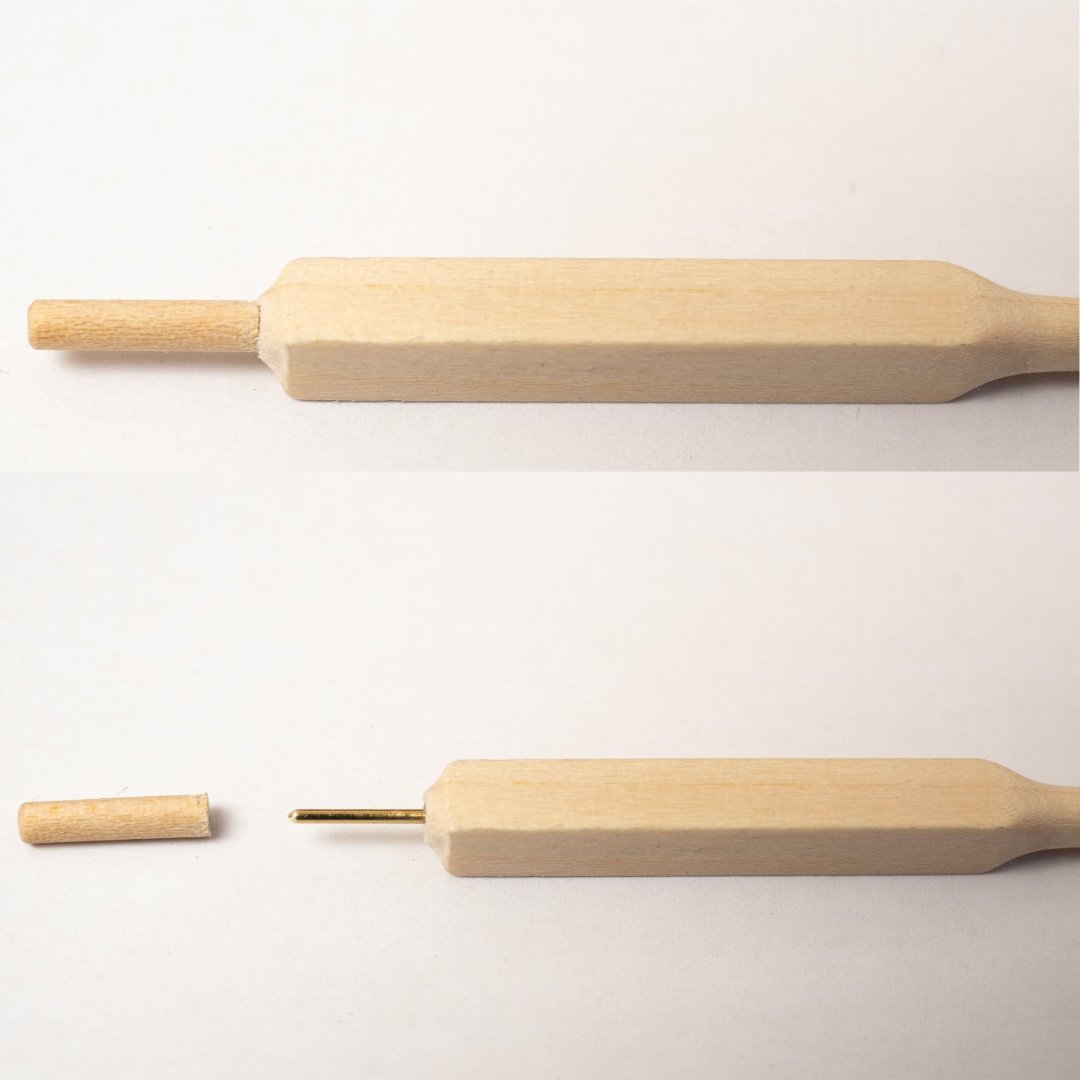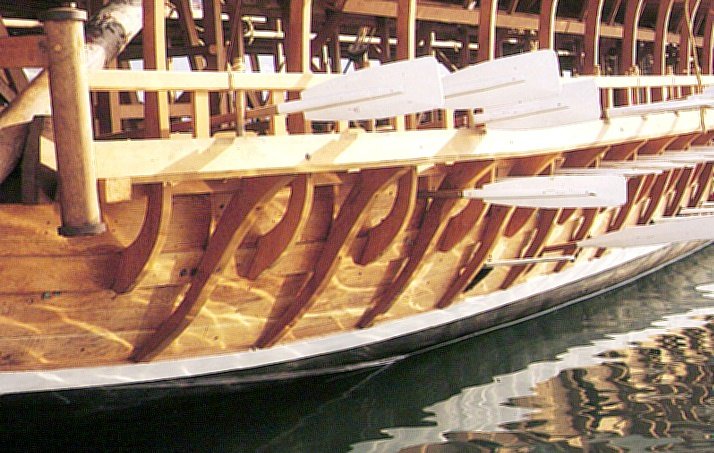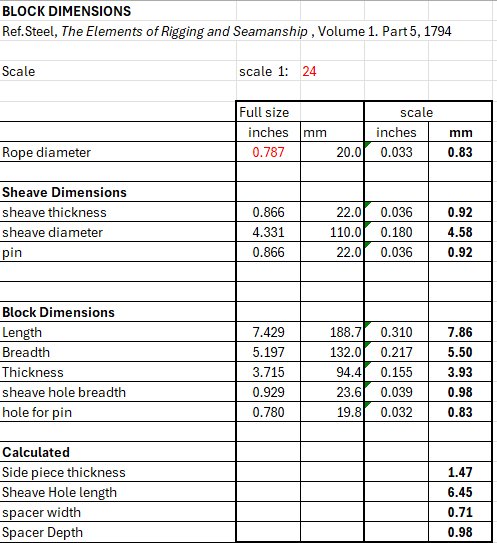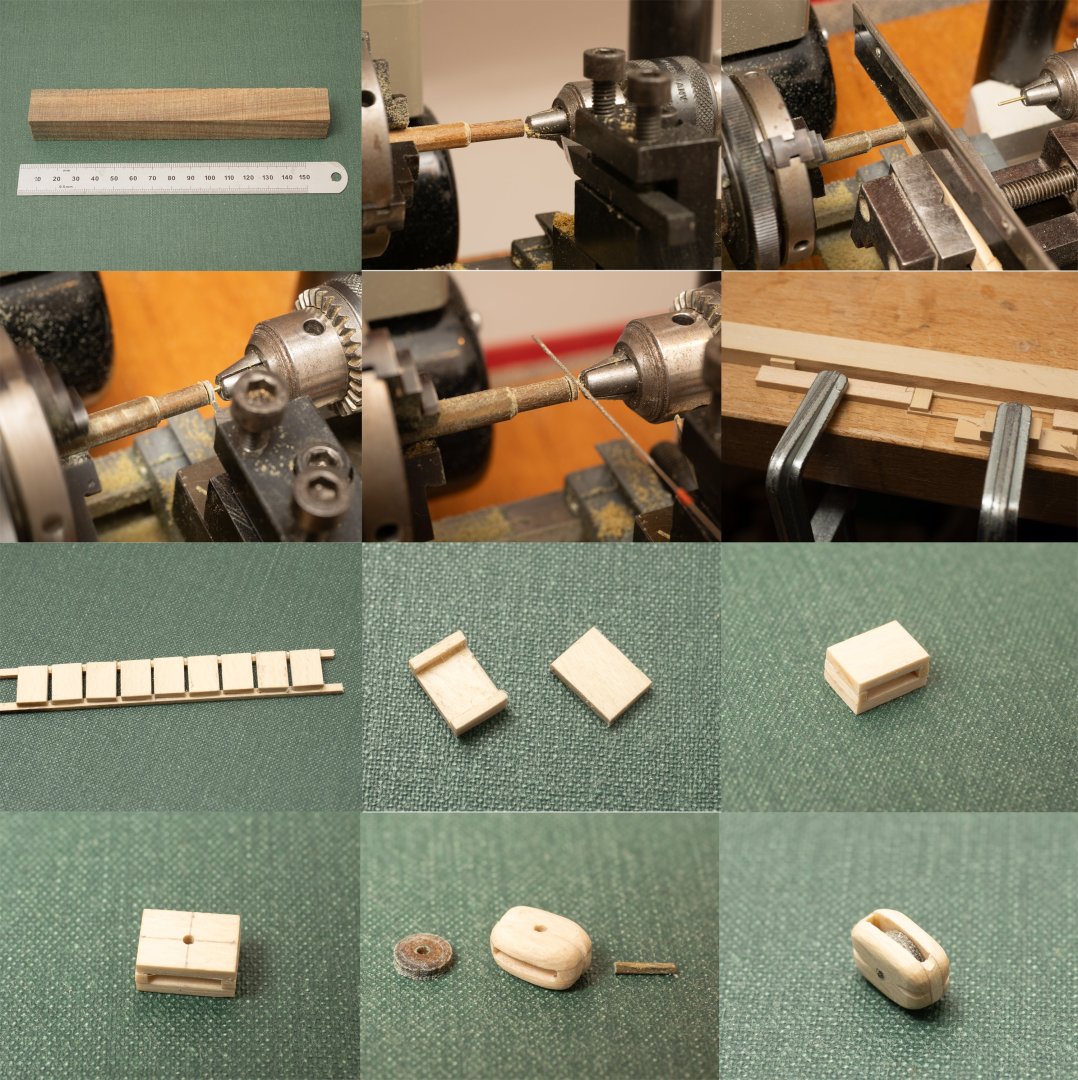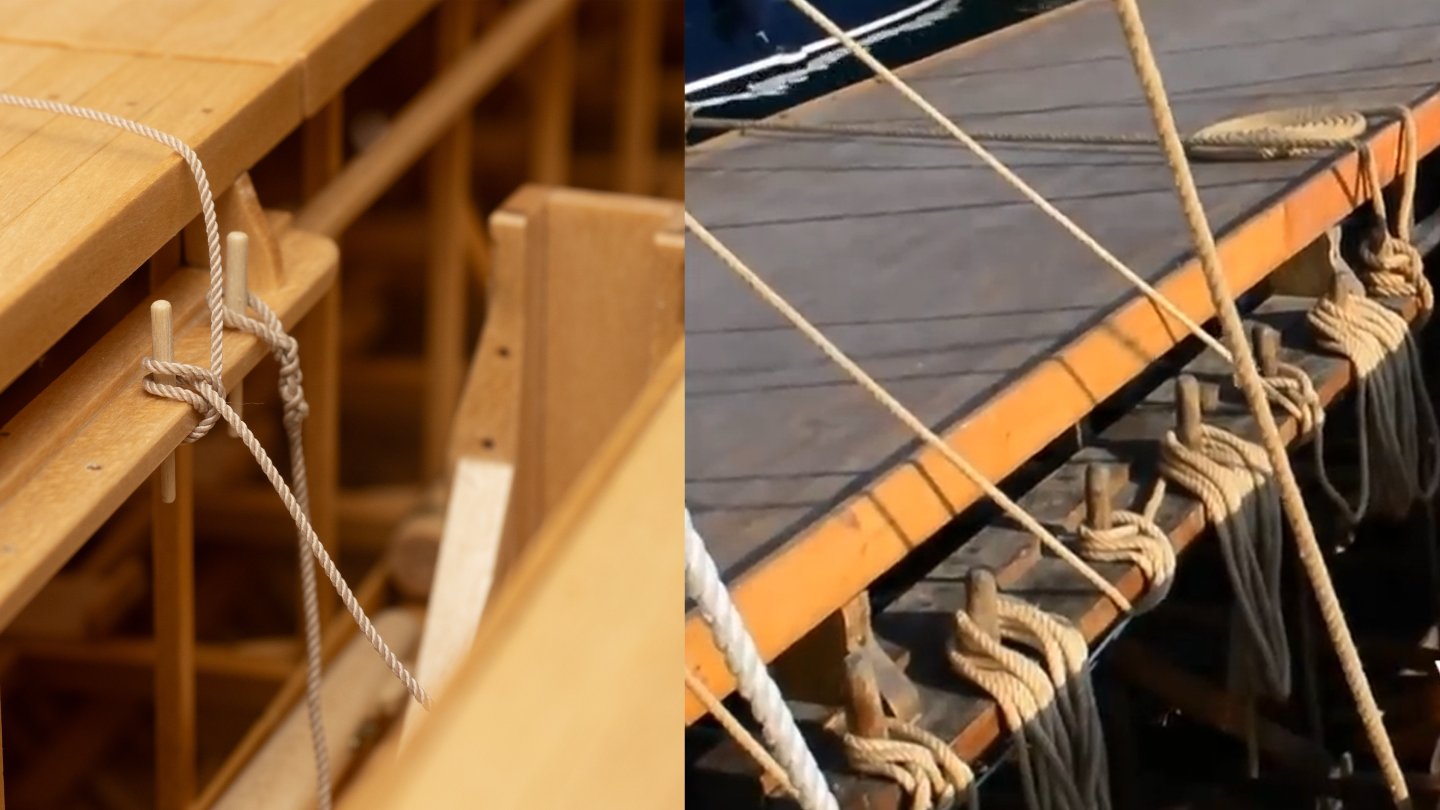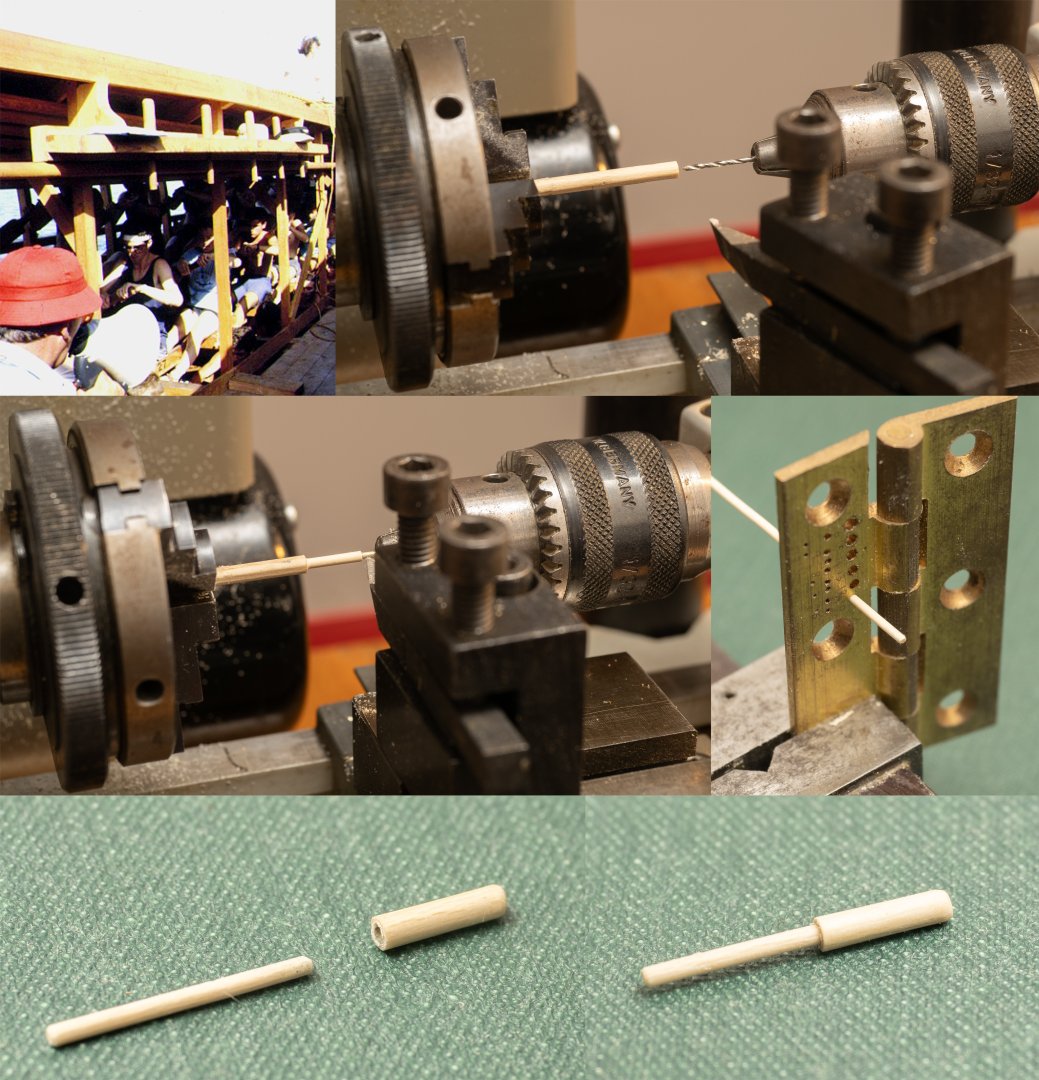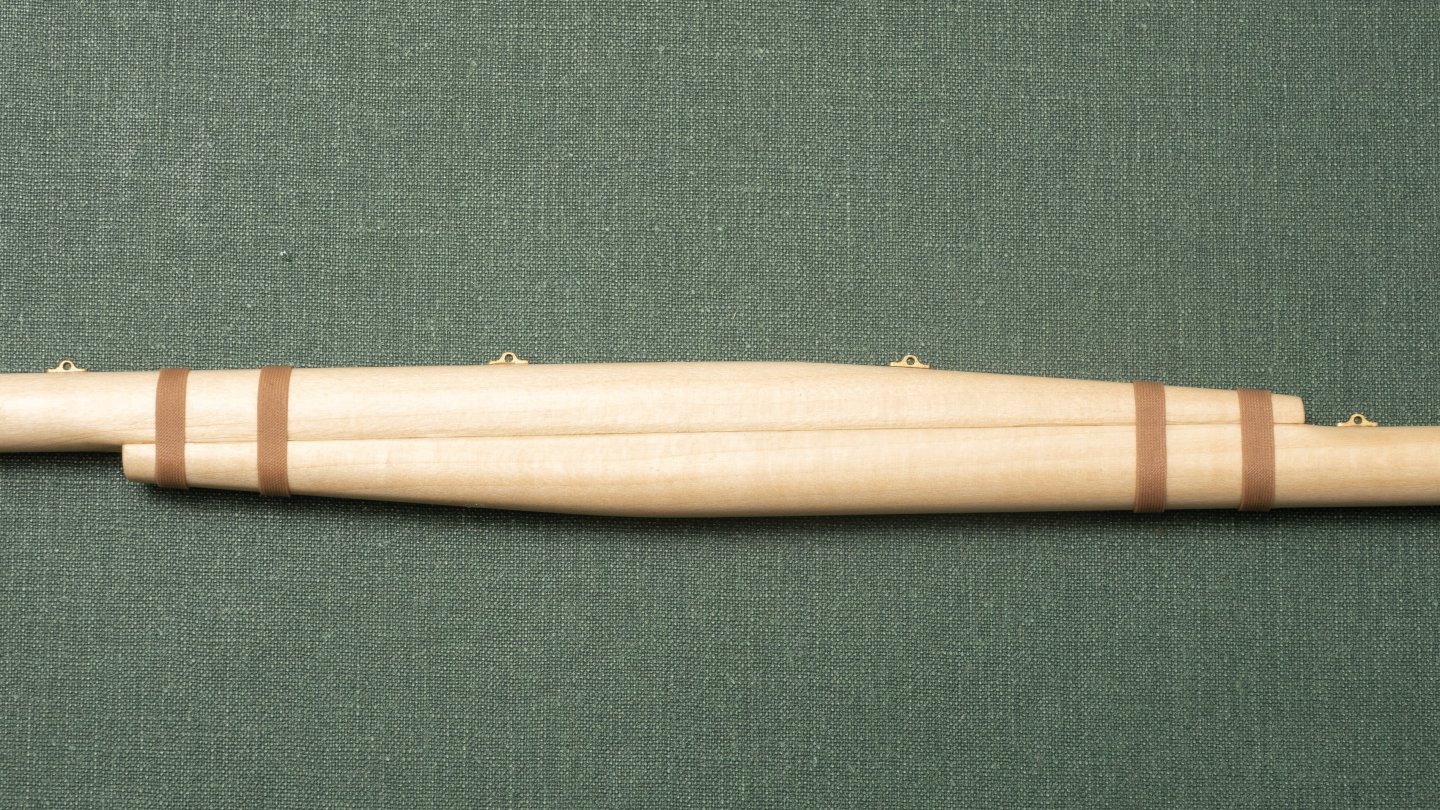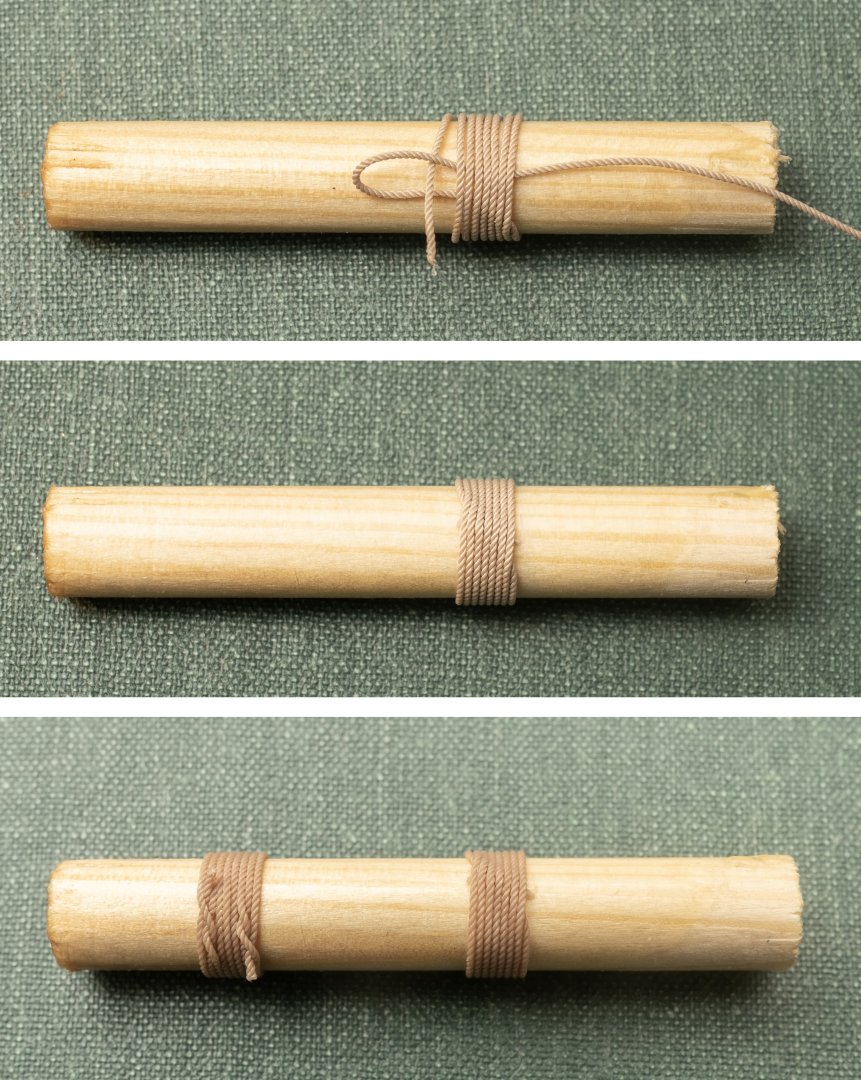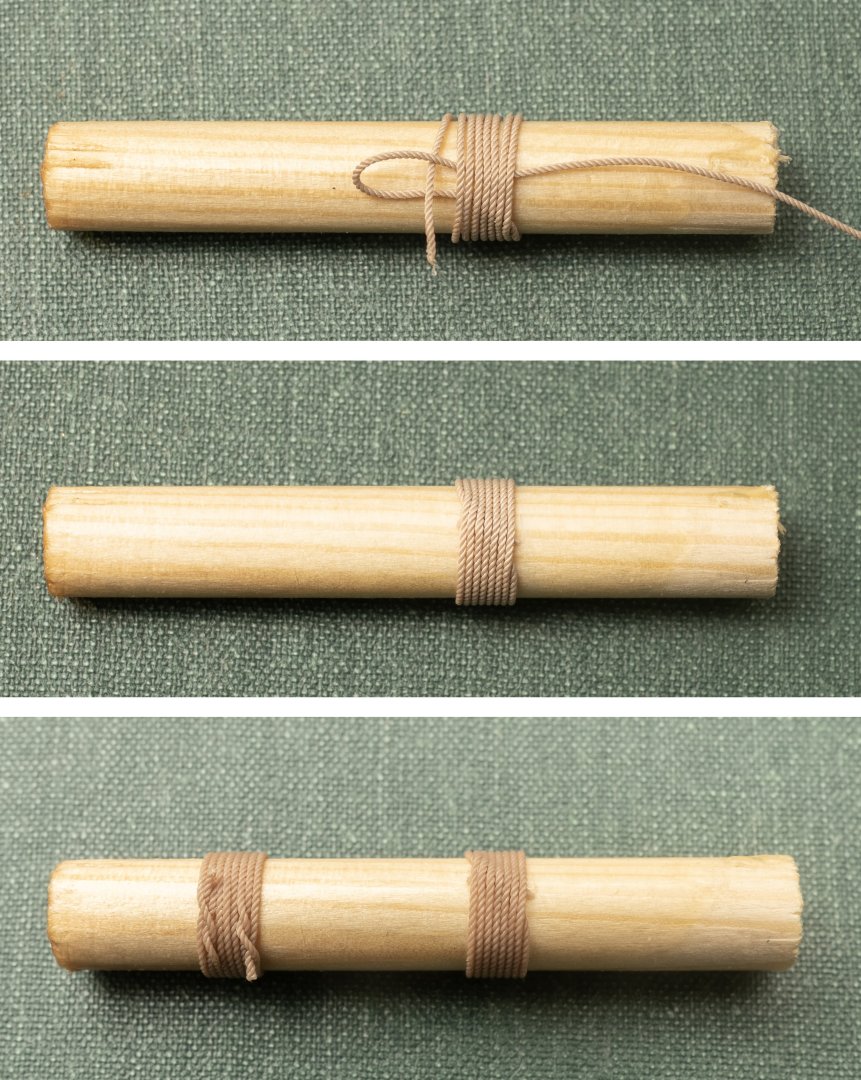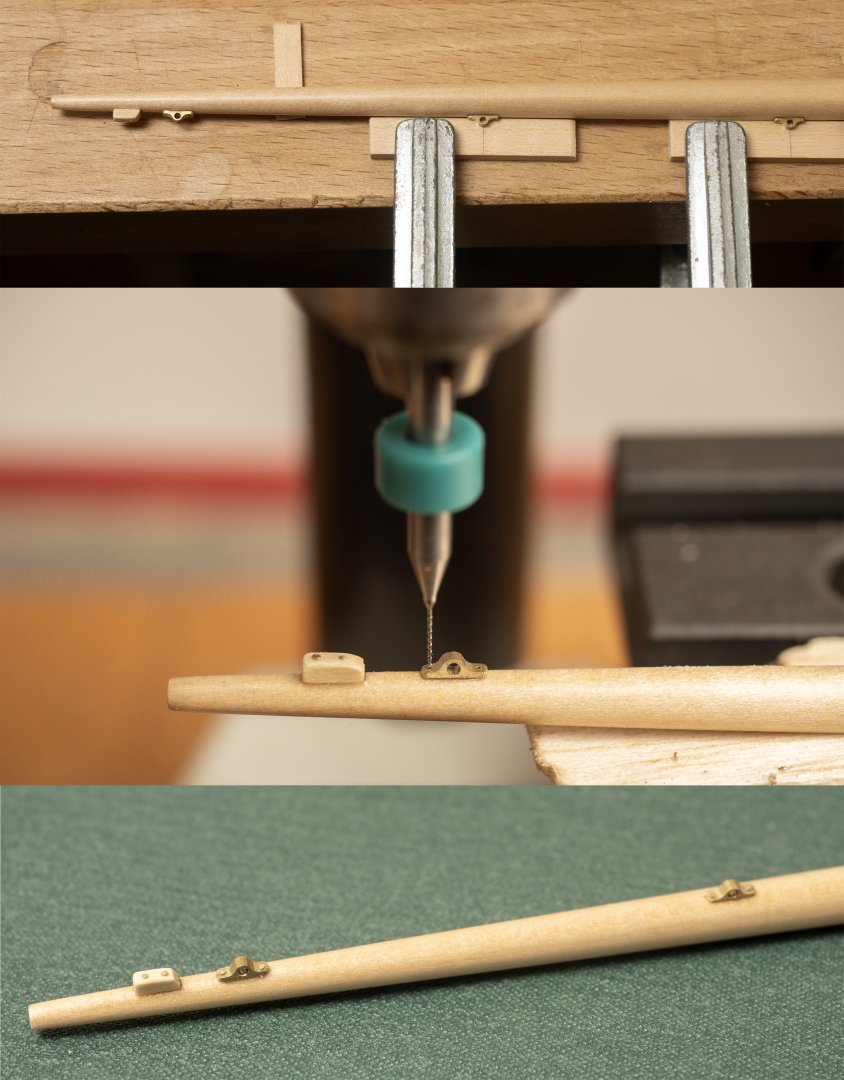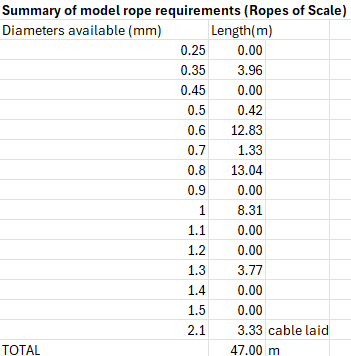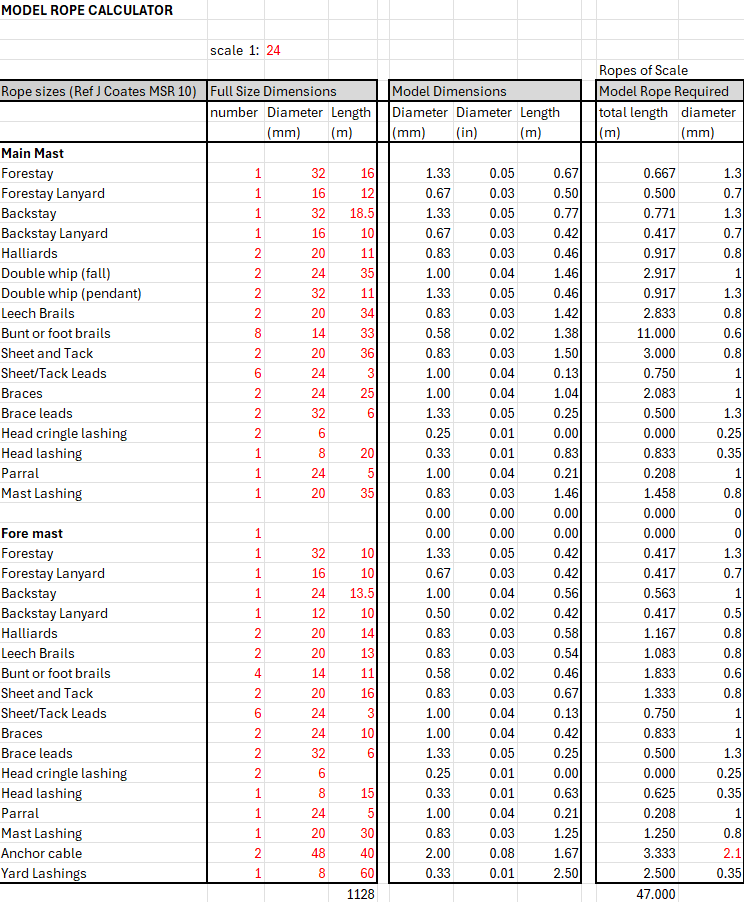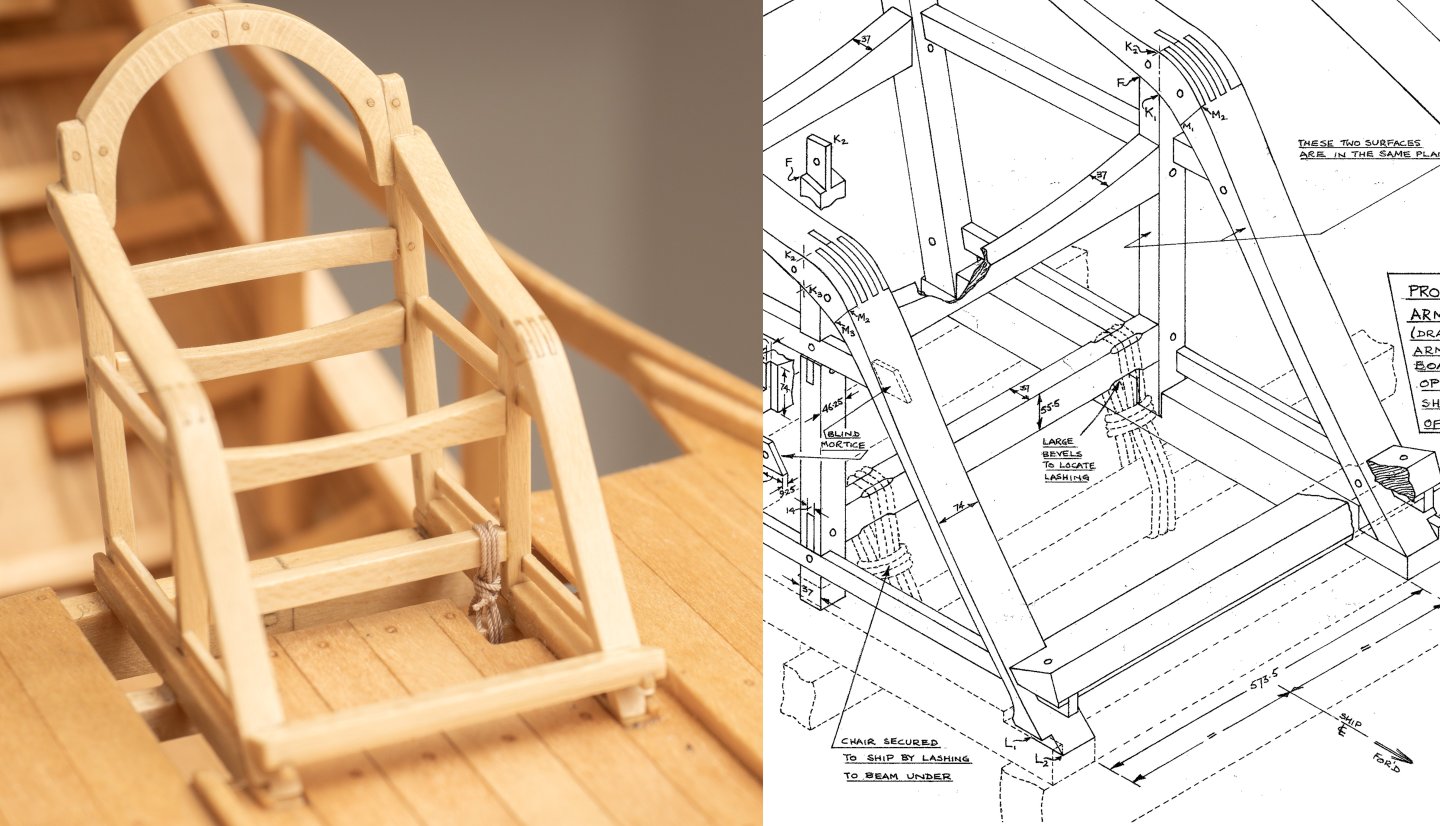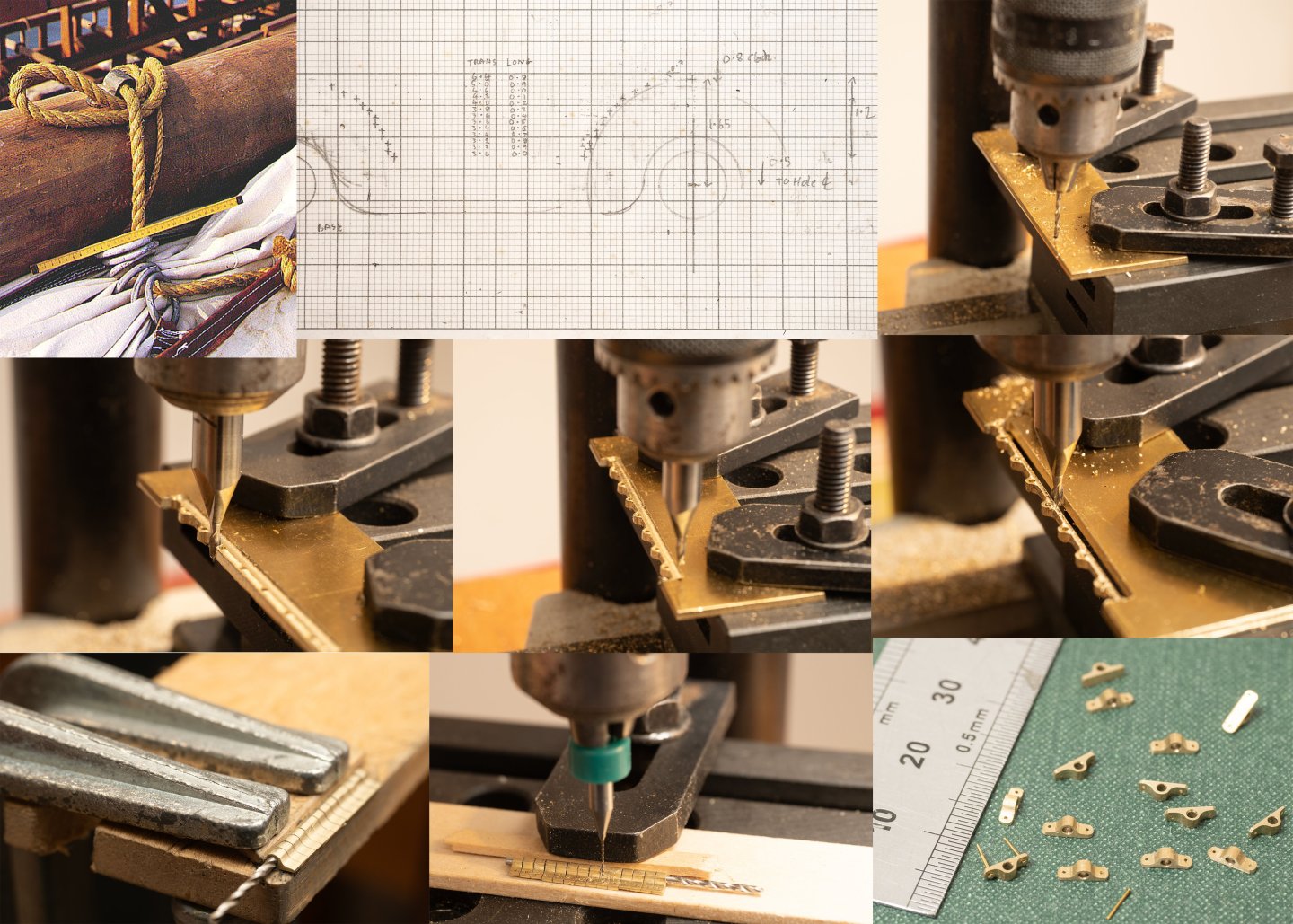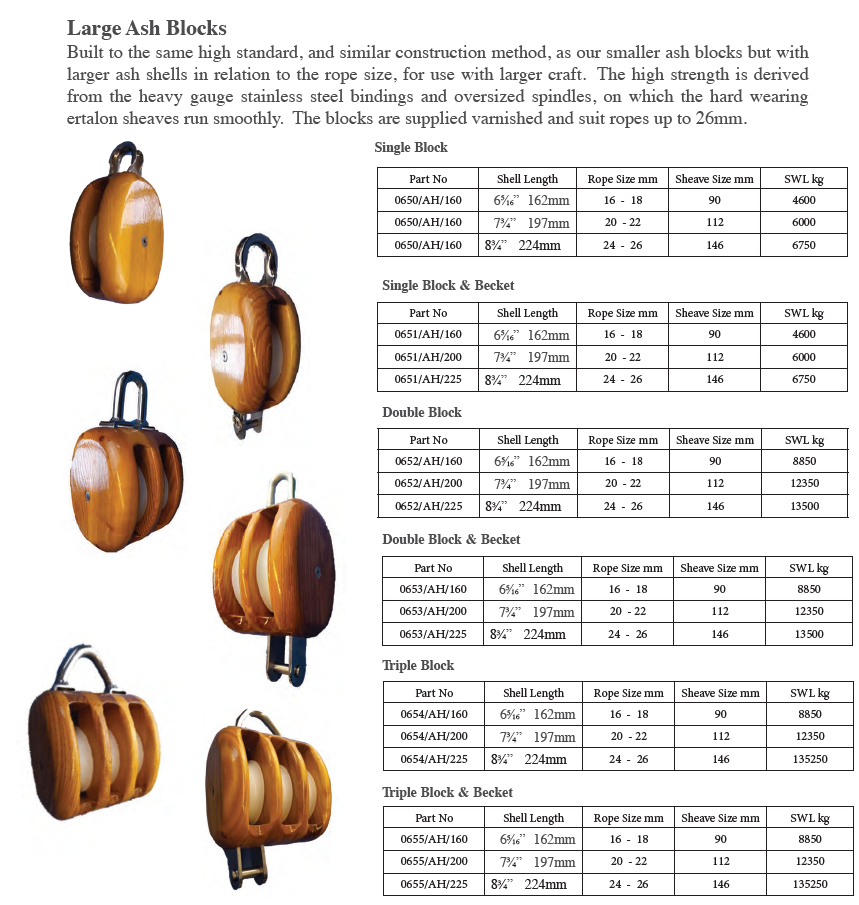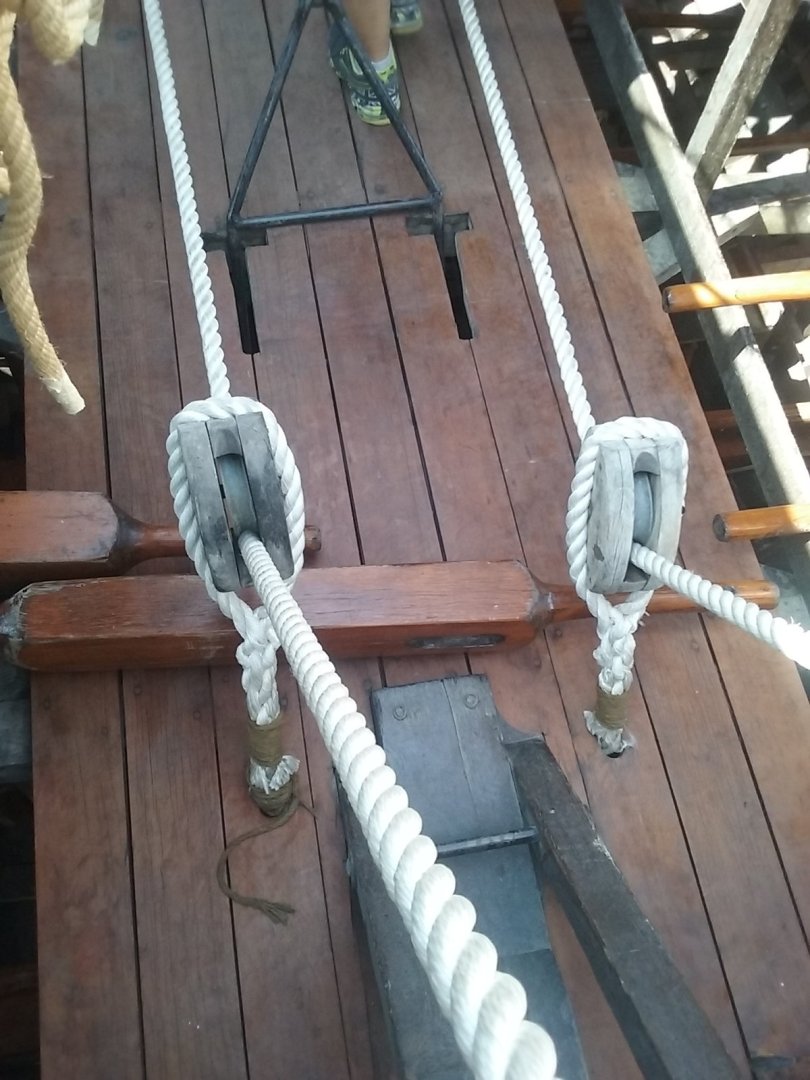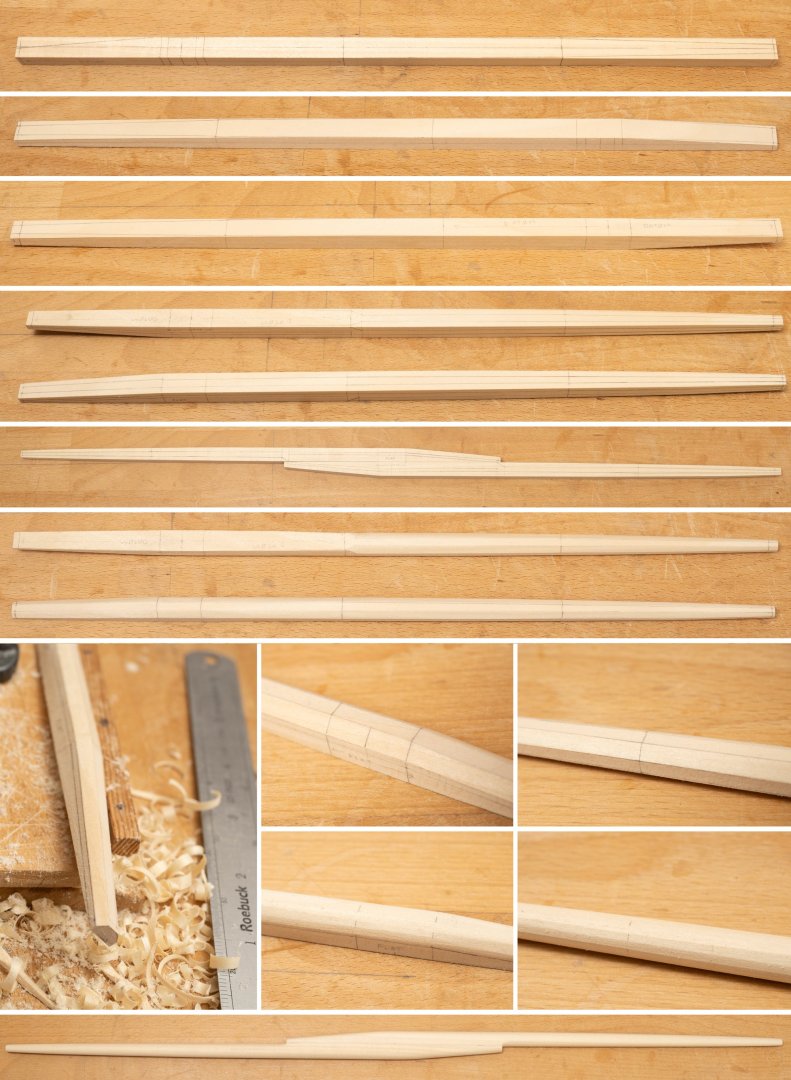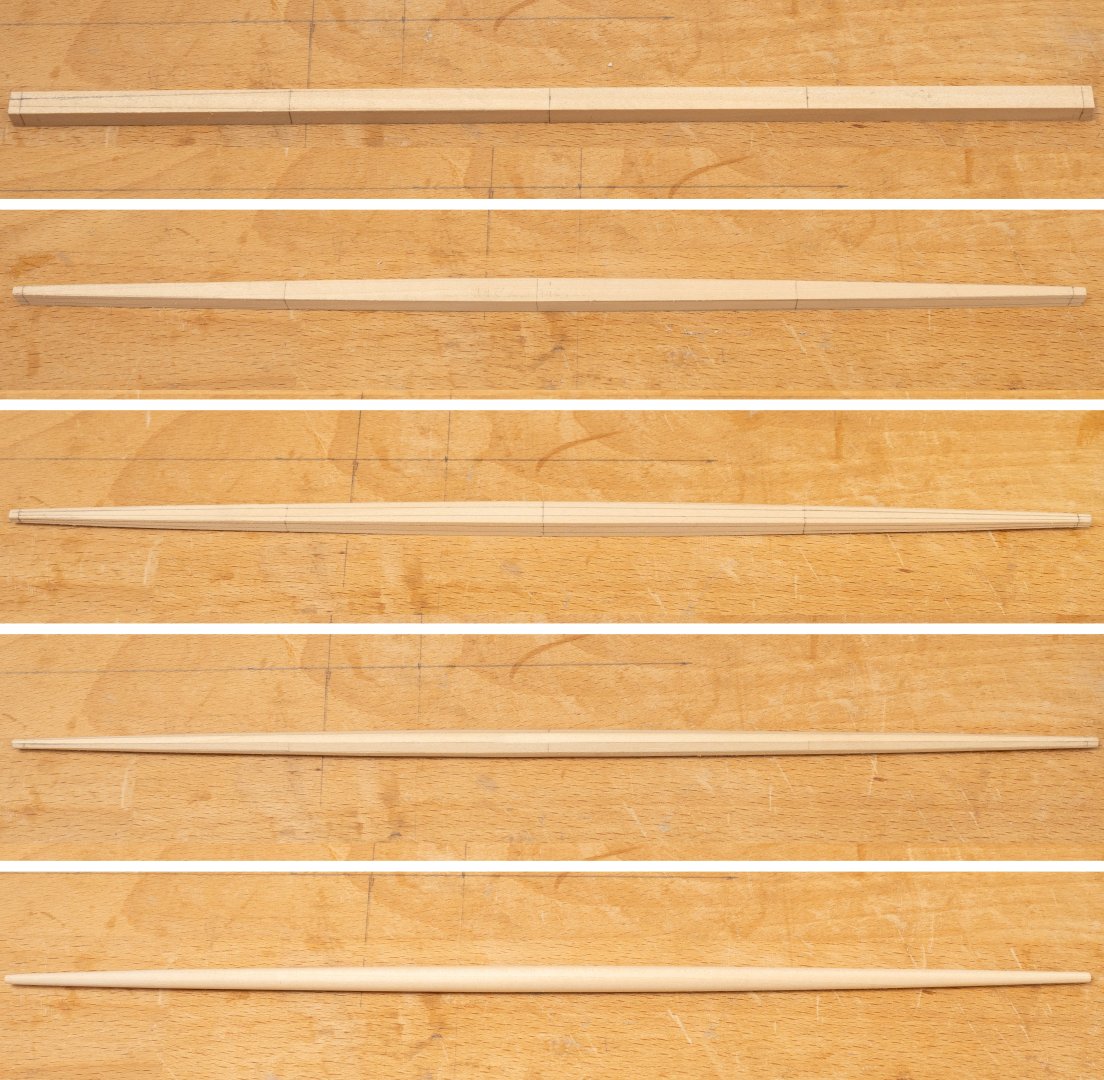-
Posts
220 -
Joined
-
Last visited
Content Type
Profiles
Forums
Gallery
Events
Everything posted by Richard Braithwaite
-
The upper image in the picture below shows some wood (Ash) that I painted 40 years ago. All the planking was coated with about 5 coats of polyurethane varnish and a couple of coats of black/white Humbrol Enamel was applied directly on top with a further coat of polyurethane varnish on top to proect it. As you can see the white paint has discoloured slightly , Im not sure whether this is due to the yellowing of the polyurethane on top or pigments comening through from underneath... The lower image shows part of the full size Trireme reconstruction "Olympias". I am building a model of this vessel (Trireme Olympias by Richard Braithwaite - - Subjects built Up to and including 1500 AD - Model Ship World™) . The model is finished with polyurethane varnish and I need to decide how to finish the oars (varnished shaft, white painted blades) So far Im thinking of two alternatives: 1. Coat the entire oar (blade and shaft) with polyurethane and then coat the bade with primer and overcoat with white enamel. 2. coat the shaft with polyurethane up to the boundary with the blade. Apply primer to the bare wood of the blade and overcoat with enamel. The second option would make most sense in terms of keeping the different paint systems separate, but I suspect i could do a neater job with the boundary with the first option. What experience do you have with this sort of paint scheme?
-
Very neat. Rather more elegant than the graph paper plot followed by tricky manal dial turning i have used for complex machined shapes! I did think of making this jig from brass/ aluminium. But, so far, my quick wooden effort seems to be stiff and durable enough... Have you had any success turning tapers on long slender wooden shafts such as oars and spars? If i could make that work it would be much better than what im doing ( machining to a square taper and then manually " octagonalising" and rounding). However, whenever ive tried turning this sort of thing it fails due to vibration/ flexing.
-
First stage of oar production. The jig bolts onto the milling table of my Unimat and allows for different tapers to be milled by fitting a spaced under the bolted on top piece. 4 setups required per oar shaft to taper each side (so the jig has to last for 4 x 170= 680 setups and clampings - hence protective strips of wood under clamps!). Each oar shaft takes about 1 hour to machine to a square taper (including marking up) with the milling cutter making 5 x 0.2mm cuts per side. The cutter could certainly manage deeper cuts on this soft wood but 0.2 mm seems the most I can safely do without too much vibration and sideways deflection of the oar shaft (particularly the last few cuts when it is at its most slender). A wedge is fitted underneath the tapered part of the shaft for alternate sides to prevent vertical deflection. (wedge machined to the same taper - using the same jig.) The image below shows the setup after each of the 4 sides have been machined. The supporting taper can be seen fitted under the shaft on the images on the right (2nd and 4th setup)
-
Spent the day milling timber for the Thranite oars using my Byrnes Table Saw , starting with a nice close grained, 30mm thick plank of lime that Ive been using for the spars and intend to use for the oar shafts. Here is one of my Athenian marines posing by the stack of timber that I now need to convert into 62 oars for the top level of my ship. After Ive done that there is only another 108 to do for the other two levels... - quite a daunting prospect... I must say, building this model has increased my respect for the Anthenians and the way in which they managed to build such large fleets of ships so quickly (and all those oars!!)
-
Ive been working on a pre-production prototype Thranite oar alongside developing jigs for making copies. The shaft is made of lime (like the bulk of the model) with a blade from 0.5mm birch plywood (from Home & Distant Models https://homeanddistant.com/ ). The handle is removable with a brass pin fixed to the loom of the oar which I am planning to use to connect to a longitudinal brass strip to hold the oars in place: The blades on the oars of Olympias are painted white and Im planning to do the same, so the missmatching colour of the birch ply will be concealed! Ill post pictures of the production process with the jigs in use as I go making the 62 Thranite oars required...
-
Now starting to think about the oars. I have the following numbers to make: 62 Thranite oars (upper level) 54 Zygian oars (mid level) 54 Thalmian oars (lower level) Im planning to build them according to the original design (they were changed for a lighter design for the last trials). Plan No 15 gives the dimensions for the Thalmian oars (which were made from a single piece of wood. There is an unnamed sketch showing all three levels which I have annotated with these dimensions as shown below ( ‘© Estate of John F. Coates, reproduced with permission.) Its a lot of oars, so now thinking of jigging arrangements for making them as consistent as possible and reducing the labour involved...
-
All 8 blocks completed and varnished. Rather confusing double reflection in the glass in this photo... Ive tried the blocks with Ben's 0.8mm poly rope and the lignum vitae sheaves run satisfyingly smoothly on their lignum vitae pins!
-
A block making interlude...(Another displacement activity as an excuse for not starting on the major project of tackling 170 oars...). The blocks on olympias dont try to reflect 600BC practice and are based on 19th century rigging. I only need 8 blocks (for the main and boat yards) and following table gives the relevant dimensions for the rope size specified: Reading Steel I noticed that the sheaves and sheave pins were made of Lignum Vitae. A google search showed that this could easily be purchased as "fountain pen blanks" so decided to give it a try. When it arived I could see why. Its a hard dense oily wood. Good material for bearings. Feels a bit like the tufnol material that is used in some sailing yacht blcock sheaves. The blocks themselves are made from Holly. The images below show the approach used. Just about doable at a scale of 1:24. Not something I would want to try for a model of HMS Victory at 1:48...
-
Here are 40 belaying pins on a rack drying after their second calt of varnish: And here are some of them mounted on the aftermost pinrails: It actually didnt take as long as I feared. An advantage of this method is that the tolerances are very tight. The lower part of each pin was a nice push fit in to the hole in the pinrail (all pulled through the same hole in the drawplate) and the upper part was all turned to the same dial settings on the lathe. The pins on Olympias are obviously a very simple shape, but the same method could be used to make shaped pins vers accurately using the stepped process described above for the brail fairleads, mast head fittings etc. (I wouldnt like to try it as a scale much less thatn 1:24 though...)
-
Now I’ve got a production line going, I’m finding my two-part method is going quite quickly (32 out of 40 made so far...) and seems to result in reasonable tolerances. Looking at photos I'm reasonably sure I’ve proportioned them right. The diameters of rope to belay on them varies between 14 and 24mm diameter full size and I’ve proportioned the pin to accommodate the largest rope. Here is a picture of a couple of pins on my rail with 0.8mm polyester rope belayed (equivalent to 20mm full size), alongside a photo of the one of the rails on the full size vessel. The mix of crisp polyester (the white rope in the foreground) and hairy hemp rope used on the full size vessel can be seen in this photograph. On the full size ship these pins were left unvarnished, but as Ive varnished everything, Ill probably varnish these as well. I guess I'm building a "Luxury yacht" version of Olympias, rather than trying to reproduce the, rather battered, post trials version! The lovely, sparklingly crisp, model polyester rope that I'm using from Rope of Scale fits nicely with this approach!
-
Been struggling today to work out a way to make belaying pins. The largest rope I will be belaying is 1 inch full size = 1mm at scale. So a 1mm diameter pin (1.5mm diameter handle) 16mm long, seems to make sense and matches pretty well with photographs of Olympias. Its a very simple wooden pin with straight sided handle (see image below). Tried turning these in one piece (from holly) but they kept becoming unstable and breaking as I tried to turn them in my Unimat. Same problem trying to turn them from brass, the overhang is just too long for the slender pin. Making them in two pieces as shown below seems to work. Process as follows: 1. Roughly 3mm round holly mounted in 3 jaw chuck and center drilled 1mm to a 5mm depth. 2. Swap the 1mm drill for 1mm brass rod and insert in hole to stabilise. 3. "Turn between centers" down to 1.5mm and cut off a 7mm length for the handle. 4. Cut a 1x1mm square section of holly and make into 1mm dowel through a draw plate (which for some reason - a long time ago- I made from a brass hinge...) 5. insert into hole in handle and cut off make a total of 16mm long for the pin. This length gives equall exposed pin above and below the pin rail (which is 2mm thick at model scale). Its going to be quite time consuming making all these pins (as always) but at least they dont keep on breaking...
-
Completed lashings (using 0.35mm polyester rope) on my main yard, secured in place with a couple of drops of CA and overcoated with matt polyurethane varnish to hold them in place. The second image shows where the ends have been pulled underneath the lashings and trimmed.
-
Thanks Loie de Fly. Roberts (who was responsible for the rig design) does not talk about classical block/deadeye etc. design in the papers that he wrote for the Trireme Trust on the subject and seems to have used modern (19th century) versions that were readily available at the time. As far as I know, no Archaeological remains of Triremes have been recovered (they tended to float when "sunk"). However, some archelogical remains of merchant ships of the time have been excavated (which sunk due to their ballast/cargo and were preserved under the sea bed) and it would be interesting to see what fittings were recoverd from these. For this model I am (generally, although I havent been 100% consistent...) building a model of the reconstruction "Olympias" rather than attempting to build a model of an ancient greek Trireme, so I shall probably go for the modern style used on that vessel.
-
A fantastic model! Some really lovely work. Could you let me know what approach you used for lashing your yards. The main yard of my Trireme build is also made of two parts held together by (rather fewer) rope lashings. Ive tried out a couple of approaches on a piece of dowel to see what they looked like ("common whipping" and "round lashing" - image below). Neither seem quite right...
- 208 replies
-
- kitbashing
- Woodcarving
-
(and 4 more)
Tagged with:
-
Preparing to put the lashings on the main yard. These are shown in drawing MSR 3 (Part reproduced below © Estate of John F. Coates, reproduced with permission): Not quite sure how these lashings were secured on Olympias. Tried a couple of approaches using 0.5mm polyester rope (from Ropes of Scale - on the actual yard I will use 0.35mm rope as closer to 8mm rope at 1:24) on a piece of dowel (see image below). The sequence is of a "common whipping". In the second image the loop has been pulled so that the end on the left is pulled under the lashing coils and then the ends trimmed off. The whole thing was then coated with polyurethane varnish to hold it in all together and in place on the dowell. Ive also tried a "round lashing" (on the left of the third image),with a clove hitch securing both ends of the lashing. The "round lashing" is often quoted as being suitable for securing two poles together, but leaves the rope ends exposed and liable to get caught up with sails etc in use. I think the "common whipping" looks neater (despite the bulge under the coils where the ends are pulled in) but neither arrangement feels that secure to me given the loads, and handling, that the yard would be subjected to in service...
-
Fixing the brail fairleads to the boat yard. Drawing MSR 8 shows copper "tingles" fitted underneath these to protect the spar from wear. However, phtographs of Olympias show these were not fitted and so I have left them off. The farileads were first fixed with epoxy and then drilled through into the spar before fixing with 0.3mm brass nails. I found it quite challenging to align the tiny (0.35mm) drill with teh holes in the fairleads and broke 2 in the process of drilling the 12 holes in the boat yard. With hindsight it would probably have been easier to drill the hole through the brass fitting and into the yard in one go...
-
Ive ordered (and now recieved) ropes made by Ben of Ropes of Scale for this project. Ive gone for polyester tan as a reasonable match for the mixture of Hemp and Polyester rope used on Olympias. I constructed a simple spreadsheet to convert the rigging list (defined in drawing MSR 10) into 1:24 scale and then match against the diameters offered by Ben: the spreadhseet then sumarises the totals of each rope diameter for ordering: So 47 m in total. As Ben makes these up in 6m lenths I have some margin (varies from size to size...). Whether this is sufficient remains to be seen. First attempt on the model today, lashing the Trierarch's chair to a quarterdeck beam (Image includes part of drawing MSR 26 © Estate of John F. Coates, reproduced with permission). Its very fiddly work, and Im still getting up to speed with it! In this case I was using Bens 0.35mm rope (equivelent to 8mm full size). I practiced with some sewing thread to work out a suitable method and work out how much rope I needed. When it came to using the polyester rope I whiped one end with Gutterman 120 thread, again very fiddly work. Ive yet to come up with a method for making this go more smoothly...Process then: 1. Start with a clove hitch around both seat and deck beams. 2. pass one more turn around both beams (to match the 3 overall turns shown in the drawing) 3. 3 half hitch turns around the lashing (again to match up with the drawing) 4. I couldnt get in there to whip the final end...so sealed with a drop of CA glue and then cut off. I ended up using a piece of rope 50mm longer than ended up in the lashing (to give me something to hold onto to do the half hitches at the end...) which means a 25% wastage rate for this first effort... Hopefully Ill get better as I go along...
-
More rigging fittings. Brail fairleads this time. Small (105mm long full size , 4.35 mm at 1:24) bronze fittings defined in drawing MSR 8. Even working at this large scale, I do get to make some small stuff! They sit on top of both yards and I need 16 of them altogether. I made them on my Unimat in strips of 7 which was the most I could do given the extent of the transverse travel on the milling table...Used my "manual CNC" approach again. Quite a challenge to remember where I was in the sequence right through 7 repeats. I lost one strip because I didnt believe the dial movements ant tried to measure with my vernier guage...Turned out the dial settings were right and the measurement I made wrong...The mounting holes are 0.35mm in diameter and nicely fit some 0.3mm diameter (4mm long) brass pins that I just recieved from Dry-dock Models and Parts.
-
Thanks, Thukydides. I looked through Steel a few days ago, and missed that bit... Today Ive been fitting the brace cleats to the Fore Yard. A bit of careful positioning of the yard and a spacer to make sure they both end up on the same centerline (Image ncludes part of drawing MSR 3 © Estate of John F. Coates, reproduced with permission)...
-
Im looking into making all the rigging fittings I need, blocks, deadeyes, fairleads etc. This page from Davey and Co's catalogue (Products – Davey & Co London Ltd) looks like a good indicator for appropriate block sizes for different rope sizes: I can also scale from photographs of Olympias, e.g. : I havent done any rigging for a very long time... Are there other good sources on block, deadeye etc proportions?
-
Shaping of the mainyard, took a bit more thought. Made of two pieces lashed together (like the illustrations in Roberts papers described above), with a relatively more complex transition of section where the two pieces are joined. I havent made yards for a very long time, but I remembered (for this last one at least...) to remark the circumference of the yard at the measurement stations at the point when it is octagonal to act as a guide to help make the faces even when shaving down the vertices to make the yard 16 sided prior to sanding to its final round shape... Finally a pic of both masts and both yards together, from which it is clear how heavily built the main yard was...
-
Completed the yard for the forward mast ("boatyard"). A nice , straightforward, tapered yard 7m long with a maximum diameter of 166mm (full size). Drawing MSR 3 gives diameters at the marked points in the series of photos below to help with the shaping:
-
A short digression on the rig of Olympias... There were a number of collaborators in the design and construction of Olympias andO.T.P Roberts was resonsible for the design of the rig (I have two articles by him describing the design and subsequent sailing trials, published in, The Trireme Project, Operational Experience 1987-90 Lessons Learnt and The Trireme Trials 1988, both published by Oxbow books). The rig design featured a large and a small sail and a large and small yard as described in Naval Inventories at the time, although there is apparently no iconographic evidence for a two masted rig in galleys of the last millenium BC. Morrison and Williams (Greek Oared Warships 900-322BC, Cambridge 1968) poi9nt to evidence that the the main mast was unrigged for battle and the smaller "boat sail" was retained to be used for down wind escape if necessary. The forward mast on Olympias also serves as a useful gantry to raise the much heavier main mast (method described in drawing MSR 13) The sails on Olympias were rigged on a yard hoisted by twin halyards but is unsupported by lifts. As mentioned before the mast is only supported by fore and backstays and has no shrouds (as designed) requiring a substantial tabernacle. The sail is controlled by brails and the downward pressure of these (and the yard braces) is thought to account for the downward curving yards seen in the icongraphy. An illustration of this , for a one masted galley is shown below.(figure taken from The Sailing Rig of Olympias, p30, The Trireme Project, Oxbow Monograph 31) There are no reef points, as such on the sails. Sail reduction, and furling, is accomplished by brails passing through rings on the leeward side of the sails, and fixed to the foot of the sail. Fore and aft balancing of the rig could be achieved by partly brailing the sail to move the center of effort fore and aft to counter weather or lee helm as required, as shown below (figure also taken from Roberts article in The Trireme Project.) Trials on Olympias also showed that slightly drawing up the middle brails when sailing downwind. Apparently this helps maintain the rectangular shape of the sail, preventing the clews pulling in and spilling the wind out of the bottom of the sail. In the two masted configuration this also helps the airflow over the forward boat sail. Performance on trial suggested that progress could be made to windward with close reaching up to 60 degrees off the wind while making 7 degrees of leeway. In light weather a sailing speed of 2.5 kts could be doubled by light rowing as a bireme (i.e. two top rows of oars only) which would have enabled 1/3 of the crew to rest on passage, even in light winds. Roberts comments that the main yard on the reconstruction was over engineered and so did not flex in the way sugested by the above illustrations. It was also very heavy, so the original plan to make the halliards from 45mm diameter leather were amended to use 20mm 3 strand polyester rope for safety reasons...
About us
Modelshipworld - Advancing Ship Modeling through Research
SSL Secured
Your security is important for us so this Website is SSL-Secured
NRG Mailing Address
Nautical Research Guild
237 South Lincoln Street
Westmont IL, 60559-1917
Model Ship World ® and the MSW logo are Registered Trademarks, and belong to the Nautical Research Guild (United States Patent and Trademark Office: No. 6,929,264 & No. 6,929,274, registered Dec. 20, 2022)
Helpful Links
About the NRG
If you enjoy building ship models that are historically accurate as well as beautiful, then The Nautical Research Guild (NRG) is just right for you.
The Guild is a non-profit educational organization whose mission is to “Advance Ship Modeling Through Research”. We provide support to our members in their efforts to raise the quality of their model ships.
The Nautical Research Guild has published our world-renowned quarterly magazine, The Nautical Research Journal, since 1955. The pages of the Journal are full of articles by accomplished ship modelers who show you how they create those exquisite details on their models, and by maritime historians who show you the correct details to build. The Journal is available in both print and digital editions. Go to the NRG web site (www.thenrg.org) to download a complimentary digital copy of the Journal. The NRG also publishes plan sets, books and compilations of back issues of the Journal and the former Ships in Scale and Model Ship Builder magazines.

